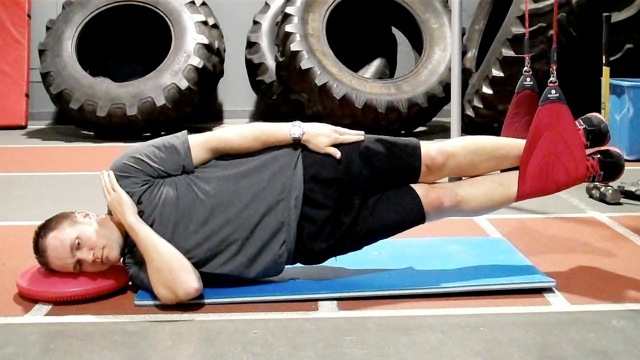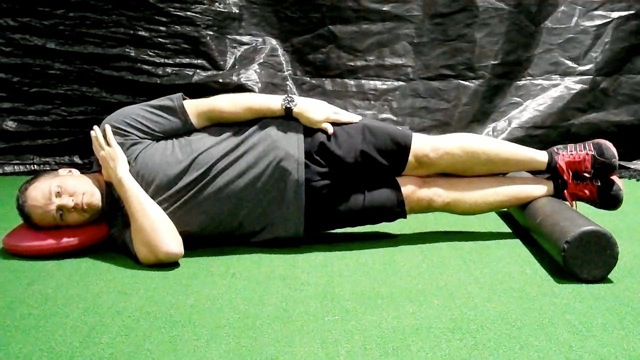
Execution:
|
Regression:
To make the exercise easier, begin with support point closer to the head or you may activate the latissimus dorsi to assist by grasping the edge of the cushion overhead with the top arm.
Progression:
To increase the difficulty, move the support point closer to the ankles, thus lengthening the lever arm. Additionally, you can place a balance cushion under the shoulder or rest all the weight in the forearm of the bottom arm (side plank position) to increase instability opting to hold the position or move up and down.
To make things even more challenging, you can move to a suspended version of the exercise using a sling (Redcord wide sling pictured below). This will allow for adjusting the suspension point caudally as well as creating additional frontal plane displacement of the lower body.
 |
Application:
Keep in mind the tensor fascia lata tends to dominate the gluteus medius so the client will have to work hard to properly activate the gluteus medius and avoid hip flexion particularly in the suspended version. The exercise can be used to reduce weakness along the lateral line, improve single leg stance/balance and resolve functional movement impairments related to weakness in the core and hip musculature.
Brian Schiff, PT, CSCS, is a licensed physical therapist, respected author and fitness professional. Currently, he serves as the supervisor at the Athletic Performance Center in Raleigh, NC. Brian presents nationally at several professional conferences and seminars on injury prevention, rehab and sport-specific training. For more cutting edge training information, subscribe to his monthly Training & Sports Medicine Update at www.BrianSchiff.com.
 Once in position, lift the pelvis up as high as possible by pushing down through the legs keeping the body in a straight line. Pause for 2-3 seconds and then slowly return to the start position.
Once in position, lift the pelvis up as high as possible by pushing down through the legs keeping the body in a straight line. Pause for 2-3 seconds and then slowly return to the start position.














